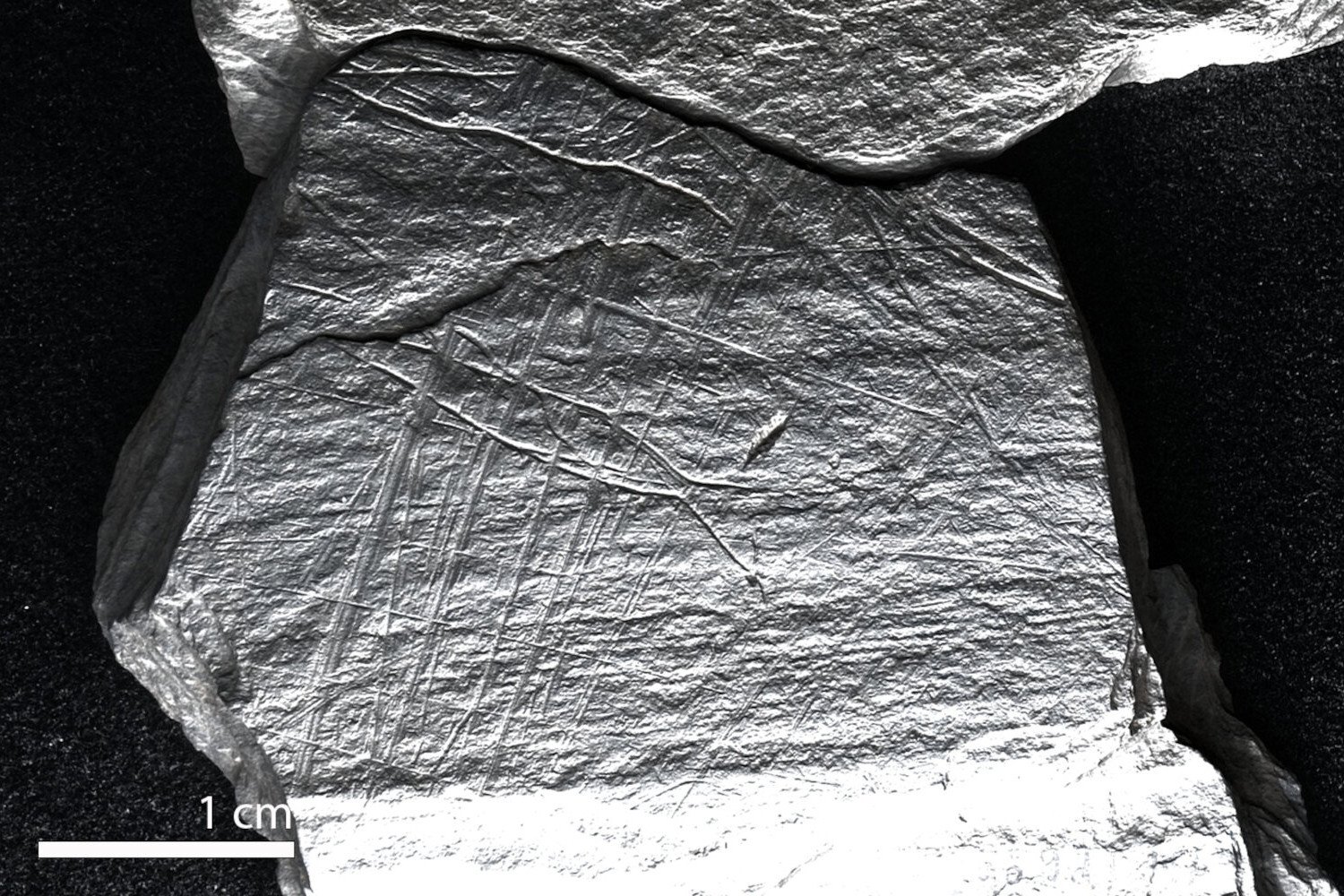During the last Ice Age, a person living along the Rhine River in what is now Europe picked up a piece of rock and etched the image of what appears to be a fish caught in some netting. They wouldn’t have guessed that 15,800 years later, researchers would declare their etching as one of the earliest depictions of fishing in human history.
Researchers from Durham University in England and the Leibniz Zentrum für Archäologie in Germany used advanced imaging techniques to reveal a fish engraving behind grid-like patterns on an ancient schist plaquette (a small slice-like piece of a type of metamorphic rock). As the researchers detail in their study, published earlier this month in PLOS ONE, the grid patterns can be interpreted as representing fishing nets or traps, making this artifact not only the oldest depiction of fishing in European prehistory, but also the only material evidence of how Paleolithic hunter-gatherers from this period caught fish. Of course, that’s if the researchers’ interpretation is accurate.
“Although it is known that fish formed part of the diet of Paleolithic hunter-gatherers at the time, until now, no evidence existed as to how fish were caught,” the researchers explained in a Leibniz-Zentrum für Archäologie statement.
This latest find is one of hundreds of engraved plaquettes archaeologists have recovered from Gönnersdorf, an Ice Age campsite in modern-day Germany inhabited by hunter-gatherers about 15,800 years ago. In addition to stylized depictions of women, the etchings appear to portray animals crucial to the survival of Late Upper Paleolithic peoples (roughly 24,000 to 14,000 years ago), including woolly rhinos, wild horses, mammoths, reindeer, and now, fish.
“This discovery posits a significant departure from earlier interpretations of the site’s iconography, which predominantly emphasized more naturalistic representations of fauna,” the researchers wrote in the study. In other words, the existence of the presumed fishing depiction challenges the idea that Ice Age artists only depicted animals and humans.
The discovery of the fish plaquette came within the context of the researchers’ broader effort to understand the role of the Gönnersdorf plaquettes in early hunter-gatherers’ lives. To achieve this, the interdisciplinary team used archaeology, visual psychology, and advanced imaging techniques like Reflectance Transformation Imaging, which reveals surface details invisible to the naked eye.
The researchers suggest that the texture and shape of the plaquettes could have played a role in what the Ice Age artists chose to depict—a process called pareidolia, which involves identifying meaning with an ambiguous pattern, not unlike when humans think they recognize shapes in clouds. They also hypothesized that Late Upper Paleolithic communities may have integrated fishing “into symbolic and social practices,” according to the statement.
The team notes that this finding is a reminder that just because certain technologies—like fishing nets—are rarely found in the archaeological record, it doesn’t mean they lack ancient origins. Ultimately, the Gönnersdorf fish plaquette joins a repertoire of fantastic Ice Age art, sheds light on how our ancestors were able to enjoy fish, and is also potential proof that paleolithic artists drew inspiration not just from animals, but from every day tasks, too.














